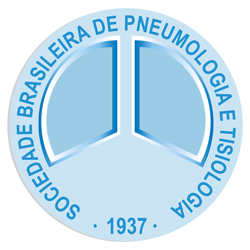- Seminário de lâminas digital
- Hematopatologia
- Caso 4 - Marianne De Castro Goncalves
- SLD-5-HEM-CASO-4-1
Imagens
Resumo clínico
Paciente do sexo masculino, 70 anos, casado, advogado. História pregressa de tabagismo (68 maços-ano) interrompido há 20 anos, osteoblastoma de coluna lombar aos 38 anos e hiperplasia prostática benigna, sem outras comorbidades.
Relatava que há cerca de 6 meses apresentava quadro progressivo de constipação intestinal, distensão abdominal e perda de peso (cerca de 10kg no período). Duas semanas antes de procurar atendimento médico evoluiu com sudorese intensa, predominante noturna.
Procurou o hospital em agosto de 2023 e a avaliação do sangue periférico mostrou apenas discreta anemia. Foi então submetido a tomografia de abdome total na qual foi identificado espessamento parietal do cólon sigmoide, medindo cerca de 11cm, além de múltiplas linfonodomegalias por todo o abdome, mais proeminentes no mesentério, onde coalesciam e formavam conglomerados de até 12cm. Foi evidenciado também espessamento difuso peritoneal, com formação de múltiplos nódulos e ascite. À colonoscopia realizada na mesma data foi identificada lesão infiltrativa e ulcerada na transição retossigmoide, medindo cerca de 12cm. A lesão do cólon sigmoide e a área de espessamento peritoneal foram submetidas a biópsia.
Diagnóstico
Linfoma B de alto grau, com rearranjo dos genes MYC e BCL2 e expressão de TDT
Diagnosis
High-grade B-cell lymphoma with MYC and BCL2 gene rearrangements and TDT expression
Clinical Summary
Male patient, 70 years old, married, lawyer. Previous history of smoking (68 pack-years) interrupted 20 years ago, osteoblastoma of the lumbar spine at 38 years of age, and benign prostatic hyperplasia with no other comorbidities.
He reported 6 months of progressive constipation, abdominal distension and weight loss (about 10kg in the period). Two weeks before seeking medical assistance, the patient developed intense sweating, predominantly at night. He went to the hospital in August 2023 and the peripheral blood evaluation showed only mild anemia. The patient then underwent a CT scan of the total abdomen, in which a parietal thickening of the sigmoid colon was identified, measuring about 11 cm, in addition to multiple lymph node enlargements throughout the abdomen, more prominent in the mesentery, where they coalesced and formed clusters of up to 12 cm. Diffuse peritoneal thickening was also observed, with the formation of multiple nodules and ascites. Colonoscopy performed on the same date revealed an infiltrative and ulcerated lesion in the rectosigmoid transition, measuring approximately 12 cm. The sigmoid colon lesion and the area of peritoneal thickening were biopsied.




 Programação completa
Programação completa
 Palestrantes confirmados
Palestrantes confirmados
 Comissões
Comissões
 Trabalhos e seminários
Trabalhos e seminários
 Localização do evento
Localização do evento
 Valores
Valores









